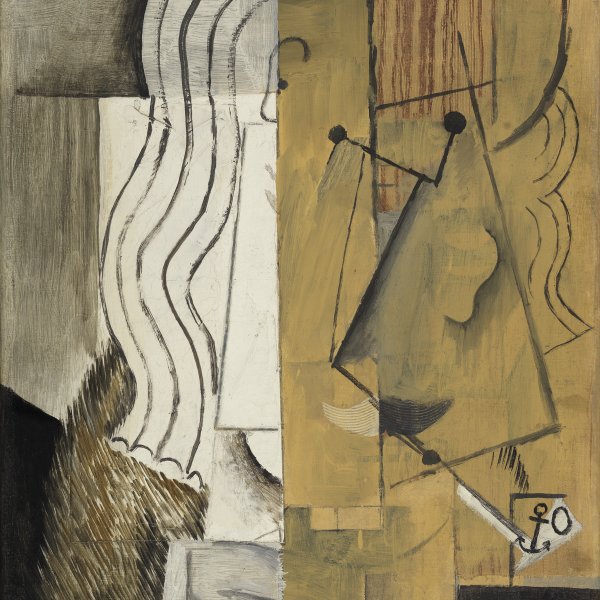The Frugal Meal
The Frugal Meal, an etching executed in September 1904 on a zinc plate previously used by Joan González to engrave a landscape, which was erased before he set to work, is one of Picasso’s earliest forays into the technique of engraving. It belongs to the La Suite des saltimbanques, a series of fifteen etchings and drypoints made between 1904 and 1905. It is therefore surprising to note Picasso’s technical mastery of a medium that was practically new to him.
This melancholic work, which marks the end of his Blue Period, may possibly depict two acrobats who would become the main subject matter of his Rose Period after he saw them perform in the Esplanade des Invalides in 1904. At the same time the sightless man, shown in profile in contrast with the frontal image of the woman, introduces us to the theme of the portrayal of blindness, which he had adopted in one of his most moving paintings from the Blue Period, The Blind Man’s Meal, painted in Barcelona in autumn 1903. The couple’s emaciated, fragile bodies, exaggeratedly elongated hands and angular faces, paired with the mannerist language the artist employs, merely emphasise their appearance of outcasts. Years later Fernande Olivier stated that the engraving personified “an intense expression of poverty and alcoholism.”
The print was a gift from Picasso to the Italian poet Ricciotto Canudo (1879–1923), who had arrived in Paris in 1903. The Málagaborn artist went on to portray him in a drawing of 1918 with an affectionate dedication: “A Ricciotto / Canudo / sympathiquement / Picasso.” Brigitte Baer has identified the print in the Thyssen-Bornemisza collection as one of the thirty copies belonging to the second state of the first edition, most of which bear dedications from the painter to his friends. The engraver Eugène Delâtre was responsible for this first impression and the plates were later purchased by Ambroise Vollard, who brought out an edition of two hundred and fifty copies in 1913 which were much less rich and exclusive than those of the first series.
Paloma Alarcó









